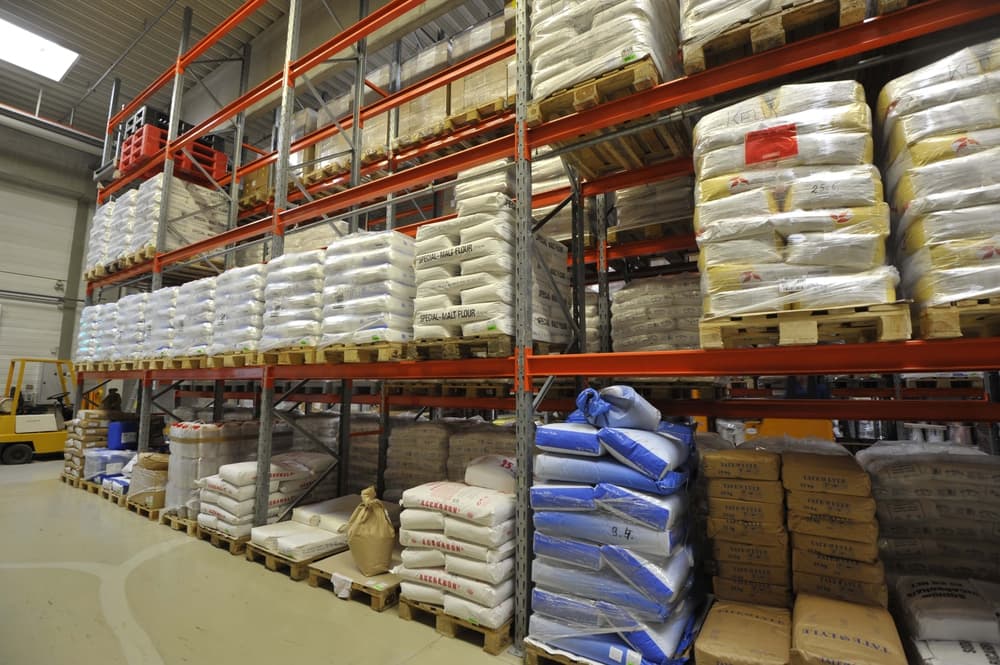Farmers, food manufacturers, and ingredient suppliers often require storage solutions to deliver their products to distributors and customers. When goods leave their facility, a food-grade warehouse provider helps them achieve a smooth-sailing supply chain.
A food-grade warehouse is a specialised facility for storing food and perishable products. It adheres to strict industry regulations, handling processes, and storage requirements to minimise food damage, contamination, and spoilage.
If you are seeking a food-grade warehouse for your business, read on. We’ll discuss this type of warehouse and the factors you should consider when looking for food-grade warehousing solutions.
What Is Food-Grade Warehousing?
The term “food grade” refers to materials or equipment that are safe for food handling, preparation, or storage. Food-grade warehousing is then a type of facility that adheres to strict regulations for the proper storage of food products.
Aside from industry standards, a food warehouse has equipment meant for safe food transfer and storage. This facility also implements strict sanitation rules and undergoes regular evaluation, ensuring compliance.
Its floors, ceilings, and walls should be clean, non-toxic, and chemical resistant. A food-grade certified warehouse also has proper drainage and adequate ventilation and lighting.
There are several kinds of food-grade warehouses. The most common types include:
- Dry storage facilities for shelf-stable food products that do not have specific temperature requirements
- Cold storage facilities for food products that should be at low temperatures without freezing
- Frozen storage facilities for highly perishable food products that should remain frozen
- Climate-controlled storage facilities for food products that need precise temperature environments

Best Practices of Food-Grade Warehouses
Food-grade warehouses adhere to the following principles to ensure the safety of all stored food products.
1. Proper Hygiene and Sanitation
Employees of a food-grade warehouse undergo proper hygiene and sanitation training to ensure food safety and prevent cross-contamination. The warehouse company also provides hygienic handwashing stations with the necessary supplies.
Aside from personal hygiene, employee training also includes learning to sanitise equipment and assigned work areas. Records of all cleaning sessions, including those by the in-house staff and industrial cleaning service providers, should be compiled and made readily available.
2. Timely Pest Control
Food-grade warehouses must remain free from rodents, insects, and other pests, both indoors and outdoors. Pest control management should perform routine inspections to ensure potential entry points are sealed or blocked.
Inspectors should check the warehouse’s perimeter at least once every three months. Traps or controlled substances are necessary if they find signs of rodent tracks or notice insect burrows. Additionally, it is important to manage trash, weeds, stagnant water, and any other potential breeding grounds for pests.
The warehouse must document pest control findings and any crisis management actions.
3. Well-Monitored Temperatures
Food products should be at the correct temperature and humidity levels to prevent contamination or spoilage. Food-grade warehouses ensure this by employing trained staff to monitor environmental conditions periodically or hourly.
They should have access to proper monitoring equipment or methods like thermometers and temperature sensors for real-time and accurate tracking. Also, the food-grade warehouse should have an established plan to handle problems that could compromise food safety.
4. Systematic Lot Tracking
Lot and date traceability is a crucial system in any food-grade warehouse. Its staff should observe proper inventory management and follow the first-in-first-out (FIFO) method.
This practice ensures that all initial batches of food products entering the facility leave first for dispatch. This approach helps perishable goods to move in and out of the warehouse at appropriate intervals.

Things to Look for in a Food-Grade Warehouse
The safe storage and transport of food products is a huge responsibility. So, when looking for a food-grade warehousing partner, it is only right to assess its every aspect. Here are essential considerations.
- Centralised location: Long-distance travel can significantly impact your food products’ quality, shelf life, and transport costs. It’s best to choose a food-grade warehouse facility within or close to your products’ final destination.
- Certifications: The food production industry follows several strict regulations and practices. Your warehouse provider should know the latest food safety techniques with proper local or global certifications, like HACCP (Hazard Analysis and Critical Control Points).
- Track record: Partner with a food-grade warehouse provider with proven experience or years of excellent service. Look for customer feedback, testimonials, reviews, and recommendations.
- Facility condition and capabilities: An ocular visit to a food-grade warehouse lets you assess the actual facility, its equipment, staff, and workflow. Also, check their pest control strategy, sanitation schedules, and training records.
- Monitoring and communication: Supply chain management troubles can arise at any time. So, choose to work with a warehouse provider that is transparent and easy to contact. That way, bottlenecks can be avoided or addressed quickly.
Choose a Reliable Food-Grade Warehouse Provider
Finding the best food-grade storage warehouses is a critical business task and decision. Because food products are sensitive and high-value, manufacturers and suppliers should thoroughly assess potential partners’ certifications, experience, and capabilities.
Contact Effective Logistics if you wish to work with a food-grade storage facility. We are HACCP accredited, and our supply chain service is Australian Quarantine and Inspection Service (AQIS) certified. Our strategic location in Melbourne also ensures safe and efficient interstate deliveries.

